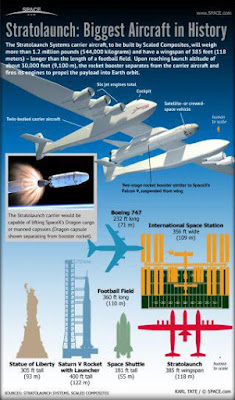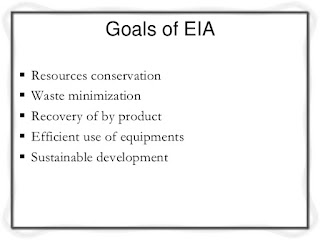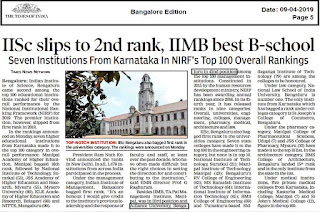There is no better way to spread the good word about the United Nations Sustainable Developmental Goals than get the students in educational Institutions to practice them. At Alliance University Bangalore, we got the students to undertake actions through a No Impact Week focusing on SDG 11, SDG12 and SDG 13 (ref to pic below) as part of UN SDG 2015 that trains to limit global climate change and temperature rise to within 1.5 deg C by 2099 AD.
 |
| Following UN SDG goals 2015-2030 AD for a sustainable world .. |
Accordingly in the Alliance University Bangalore, a group of 23 of my students pursuing Operations elective in the sixth semester of BBA were given this task, try their level best to have NO IMPACT on the environment for a period of one week to start with.
Students, as usual, if properly guided are very sincere and serious right from the beginning. They have been asked by their parents to eat well and live well, but when I asked them to look at their consumption, travel, living and eating patterns and asked them to relook at them, see what all caused environmental damage and how its impact could be reduced if not totally eliminated, the results were really promising.
I am listing down some of the interesting ideas / thoughts and actions that came from the BBA sem 6 students.
 |
| Create Awareness .... |
1. Using public transport (BMTC buses) were reported by mostly everybody.
2. Flatmates who used to watch the same serial on TV on two different laptops now have started watching the serial from one laptop.
3. Reducing the frequency of washing of clothes to once in three days.
4. Carry own bags to do shopping instead of taking plastic carry bags from the store
walk for small errands than taking bikes / cars
5. Upcycling of old plastic water bottle as a toothbrush holder for the flat inmates
6. Stopped using chemical based room fresheners, instead using camphor
7. Stopped reading the print version of newspapers, instead reading the online version
8. Planted two saplings in the house.
9. Asked mother to ash clothes using washing machine only when there is a load full.
10. Shop not from the distant supermarket, but from the nearby corner store, helping the store keeper and keeping my supply chain costs low too
11. Make online payments, ask for email receipts than paper receipts
12. Instead of just watching social media posts from friends, have now started sharing them
13. Reduced frequency of eating non-veg food
14. Open the curtains instead of switching on lights
15. Making art items from waste
16. Refusing plastic bags from shop keeper
17. Started using refillable water bottle
18. Buy dress brands manufactured locally instead of imported ones
19. Switch off laptop and take off mobile phones from power
20. Buy products from environmentally conscious companies and those who work for the betterment of the environment.
21. Make it a point to switch off geyser after taking bath
22. Use cans rather than plastic bottled beverages
23. Don't take ATM receipts from ATM machines
24. Make bulk purchase of home provisions
25. Use waste amazon boxes as storage bins
26. Use biodegradable garbage bags, than the black ones
27. Properly maintaining the bike
28. Defrosting the fridge frequently
29. Install small 12 V ventilator fan to improve air circulation inside room
30. Use car pooling
31. Avoid over charging personal devices
32. Started using existing notebooks
33. Switching off car ac when the air inside car is cold
34. Use washing machine only for washing , not drying
35. Started food by taking smaller portions on smaller plates
36. Not using bottled water and carrying water bottle
37. Shorten shower time
38. Make arts and craft from waste articles like bottles, cans etc
39. Use less plates for each meal
40. Use dishwasher only when full load of plates is available
41. Get everybody to be in a single room than in different rooms to conserve electricity
42. Use cut plastic water bottles to store waste paper and keep track of waste generation
43. Reduced non-veg, high fat avoid packaged food
44. Reduced non-veg food consumption
45. Turn off fans in electric elevators when not in use
46. Reduced frequency of visiting restaurants and did more cooking at home
47. Interning in Decathlon, he switched off 70% of lights inside store after 9 PM.
48. Requesting store manager to replace tubelights with CFL or LED bulbs
49. Use reusable items like fork, spoon, bottle etc
50. Do not overcook food
51. Print as little as necessary
52. Be the last person to leave the class and then switch off all fans and lights
53. Use dustbin to throw away waste
54. I will continue practicing No Impact week henceforth for saving environment
55. Use cold water when washing clothes
56. Get power strips to connect electric devices to save power by switching off completely
57. If buying a vehicle for myself, it will be a hybrid vehicle
58. Started driving at low speeds
59. Planted a garden at home
60. Started using vinegar to kills, germs, bacteria and mold
61. Using concentrated detergent as it has reduced supply chain costs, better for environment
62. Instructed maid to conserve water and switch off lights after cleaning rooms
63. Cook on low flame to conserve LPG
64. Instead of drying clothes under fan, asked roommate to dry clothes outside
65. In summer keep the doors and windows of room closed during noontime, to prevent heat entering the room
66. Started using salt bowl instead of room freshener
67. Reduction in use of single use plastic
68. Only stream videos online not completely download, so streaming can be stopped if it is not a useful video
69. Always giving lift to someone when traveling alone
70. Reduced dining out
71. Kept a plastic bottle to collect all waste inside the car
72. Using an immersion rod instead of a heater to reduce electricity consumption
73. Even for online order, I wait for my cart to be full than ordering alone to reduce setup costs
74. Publicise NO IMPACT WEEK operations to at least 50 friends asking them to observe the No Impact week in their organisations / institutions
75. Gave all my old text books to my juniors so that they need not buy new books and damage environment
76. Try to carry small items in my hand or in m dress pockets than packaging
77. Share food if extra and do not waste it
78. I try to help whoever is in need of food
79. Flush the toilet every time after use to keep it clean
80. give unusable old items to people in the vicinity..
These were excellent ideas and proposals that came up from the students in the class. I was totally floored by these ideas as I am sure i have been successful in creating an awareness among the students on the need to reduce personal Carbon footprints of each individual.
Hope all the viewers who read these suggestions from the students think it ovber and do their bit to save the environment.
George..

 Click here for a video on the organisation ..
Click here for a video on the organisation ..

































